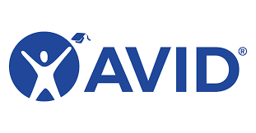Flexible Spending Accounts (FSAs)
Flexible Spending Accounts (FSAs) allow you to pay for eligible expenses using tax-free dollars. Important: There is a “use it or lose it” rule imposed by the IRS. If you do not spend all the money in your FSA by March 31 of the following year for expenses incurred from January 1 – December 31, unused dollars will be forfeited per IRS regulations for pretax contributions.
The Three Types of FSAs Are:
Plan Information
Plan Name: XXXX
Policy Number: #XXXX
Effective Date: XX/XX/XXXX
Network: XXXX
General Purpose Healthcare FSA
Contribute up to $3,300 per year, pretax, to pay for copays, prescription expenses, lab exams and tests, contact lenses and eyeglasses.
Limited Purpose FSA
Those enrolled in the HDHP can contribute up to $3,300 per year, pretax, to pay for eligible vision and dental expenses.
Dependent Care FSA
Contribute up to $5,000 per year ($2,500 if married and filing separate tax returns), pretax, to pay for daycare expenses associated with caring for elder or child dependents that are necessary for you or your spouse to work or attend school full-time. You cannot use your Healthcare FSA to pay for Dependent Care expenses.
Rollover
With Healthcare and Limited Purpose FSAs, you can rollover up to $660 to the following plan year. Expenses must be incurred within the plan year. All funds above $660 remaining in your account after December 31 of the plan year will be forfeited.
How Much Could You Save?
Here’s an example. Let’s say Tom decides to set aside $2,000 in an FSA for the year. Normally, on that money, he’d pay $560 in federal income tax, $100 in state income tax, and $153 in FICA tax. So, by contributing that $2,000 to his FSA, he’ll get an $813 tax savings for the year.
Without the FSA, Tom would pay:
- 28% in federal income tax: $560 savings
- 5% in state income tax: $100 savings
- 7.65% in Federal Insurance Contributions Act (FICA) tax: $153 savings
His total tax savings for the year with an FSA: $813
